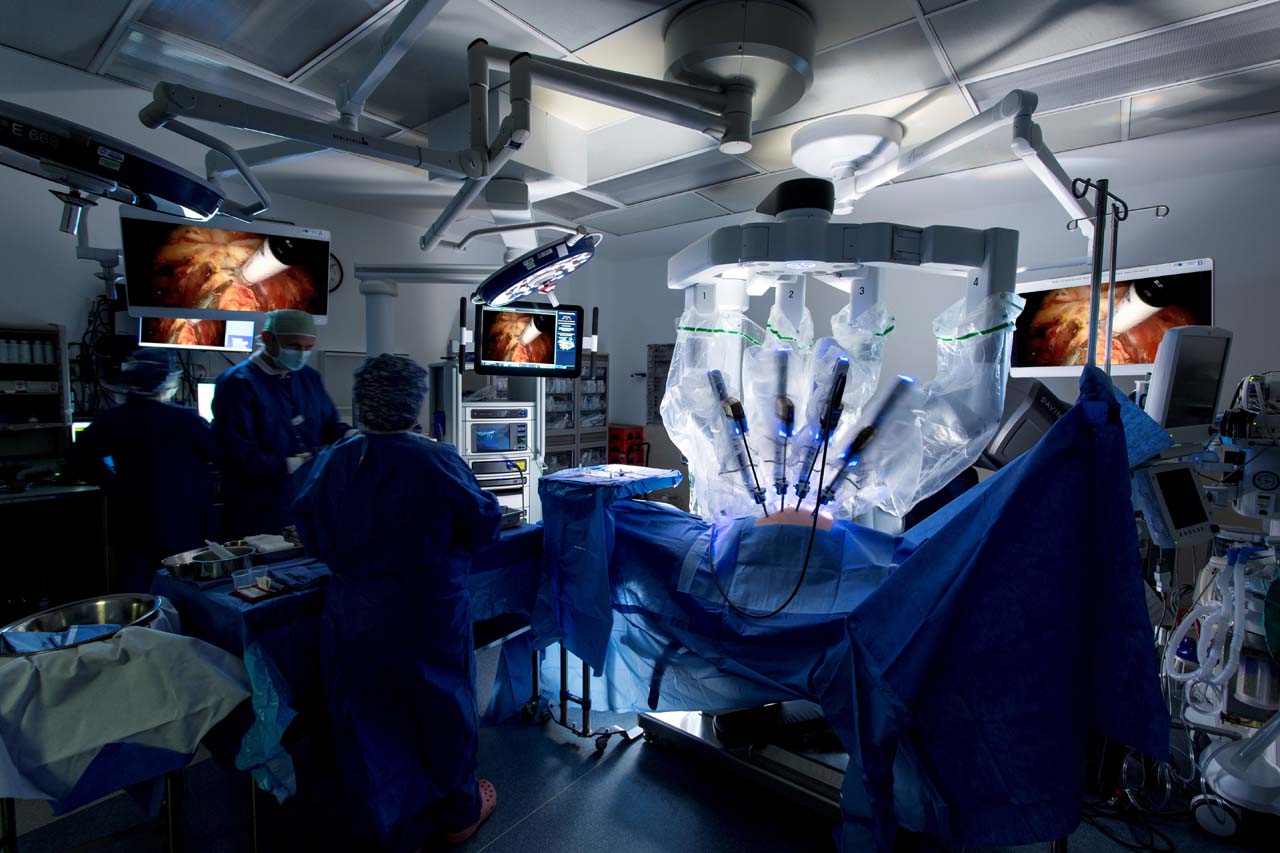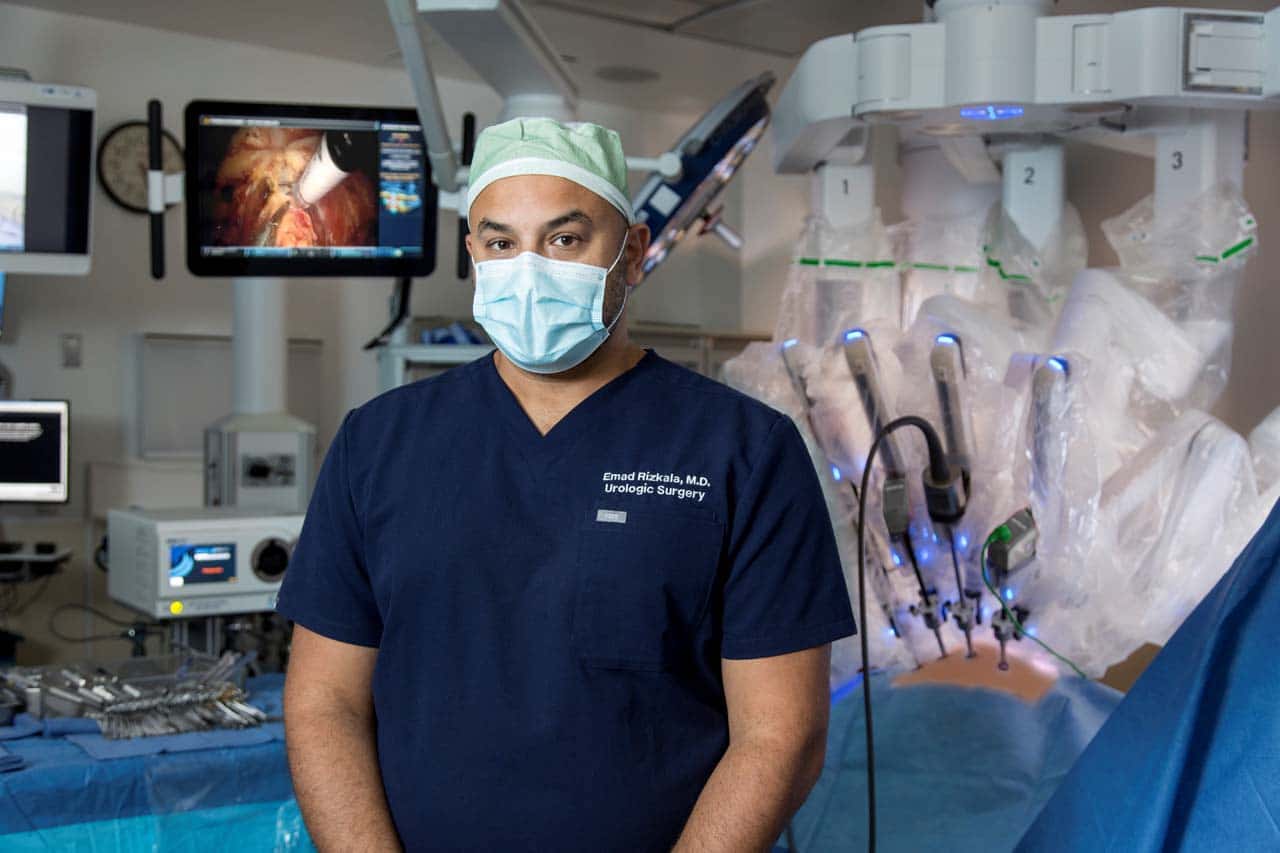BAYSHORE MEDICAL CENTER ACQUIRES A NUMBER OF NEW CUTTING EDGE SYSTEMS AND DEVICES, SUBSTANTIALLY INCREASING THE HOSPITAL’S MEDICAL AND SURGICAL CAPABILITIES
BY JESSICA JONES GORMAN • PHOTOS BY AMESSE PHOTOGRAPHY
Committed to improving the health of the community and advancing New Jersey’s medical care, Bayshore Medical Center has been building upon its growing reserve of technological innovation for years. Adding a range of minimally invasive tools and devices, the Holmdel Medical Center, which is part of the Hackensack Meridian Health network, has increased its medical and surgical capabilities substantially in anticipation of the launch of a new emergency department. And with the addition of the newest robotic surgical systems and high definition imaging, Bayshore continues to forge ahead.

“Bayshore Medical Center’s medical focus has always been ahead of the curve and now with all of this new technology we are greatly increasing the hospital’s capability,” noted Frank Citara, MBA, chief hospital executive at Bayshore Medical Center. “A good portion of this technology is donor funded, made possible by the work of our foundation, which supports the level of confidence the community has in this institution.”
Home to the newest robotic surgical system, the da Vinci Xi, Bayshore’s physicians are making use of this innovative technology to further advance minimally invasive surgery across a spectrum of subspecialties. Optimized for multi quadrant surgeries and used in urology, general surgery, thoracic surgery, bariatrics, and gynecology, the da Vinci Xi robot offers patients a myriad of benefits, including less pain and discomfort, minimal scarring, a shorter hospital stay, faster recovery time, and lower infection rates.
“The da Vinci Xi allows surgeons better control with greater dexterity for complex cases, a benefit over traditional surgical and purely laparoscopic approaches,” noted the hospital. “The da Vinci Xi builds upon the capabilities of the da Vinci Si model, and is optimized for highly complex surgery.”

It’s just one of many innovations the hospital is currently developing. “We’re introducing many new technologies to prepare us for our ongoing growth,” Citara continued, referencing the current construction of the hospital’s new Emergency Care Center, the Dr. Robert H. Harris Emergency Care Center. “The 32,000 square foot expanded emergency department is slated to open in 2021 and will have the capacity to care for more than 55,000 people annually, offering decreased wait times and increased efficiency. That’s why we’re working so diligently to bring state of the art technology into our patients’ own backyard.”
Stephan Haspel, manager of surgical services for Bayshore, explained some of the innovation that is now available in the hospital’s operating rooms and catheterization labs.
“The da Vinci Xi is major news for Bayshore, currently being used in general, thoracic, and urologic surgeries,” explained Haspel. Common urologic surgeries include treating cancerous conditions of the prostate and kidney as well as reconstructive procedures of the kidney, ureters, and urinary bladder. “The system is also used in many abdominal and gynecological surgeries and will soon be used for bariatric procedures at Bayshore.”

In the catheterization lab, the Shockwave intravascular lithotripsy is being utilized for patients with peripheral vascular disease.
A balloon sends an electrical impulse which causes micro bubbles to expand, drop, and regress,” said Haspel. “A shockwave hits the calcification in the artery, breaking it up while preserving the soft tissue. It’s similar to the system used to break up kidney stones but can be used safely within an artery.”

Bayshore is also now home to a Micra AV Transcatheter Pacing System for the treatment of severe aortic stenosis. In addition, the hospital recently underwent a thorough upgrade of all of its endoscopy equipment, acquiring Olympus Endoscopic Ultrasound Technology (EUS), which enables minimally invasive diagnoses of cancers and diseases in the GI tract and adjacent structures without surgery. “From a clinical perspective, this means that an abnormality below the surface of the digestive tract wall such as a suspicious growth that was detected at a prior endoscopy or during a CT scan or physical exam can be further evaluated under EUS, helping doctors better understand its nature and prescribe the best treatment option,” Olympus noted.
The VISERA 4K ultra high definition imaging system is also in use at Bayshore, bringing state of the art cinema level image resolution and precision to Bayshore’s operating room, enabling unparalleled visualization inside the human body. And in MRI, a Wide Bore scanner was added, offering a new option for claustrophobic patients not usually able to tolerate important diagnostic procedures and reducing the need for sedation. A “silent MRI,” this scanner greatly reduces the noise typically associated with MRI scans and reduces scan times, which has a positive impact on patient satisfaction.

“All of these systems keep us at the forefront,” noted Karen Ranta Daly, director of surgical services and nursing operation for Bayshore. “This is the same equipment used in larger medical centers but in bringing it into a community setting like Bayshore we are making it easier for local residents to receive the best possible care.”
Bayshore Medical Center
727 N Beers Street, Holmdel / 732.739.5900 /
bayshoremedicalcenter.org
